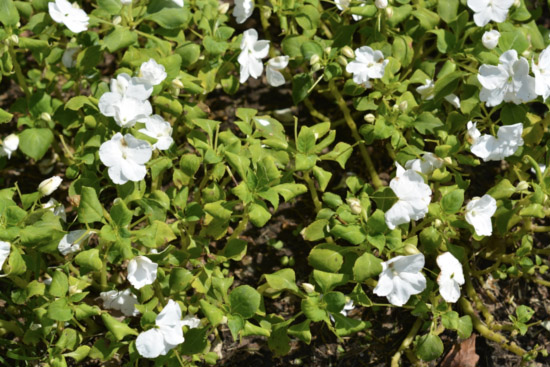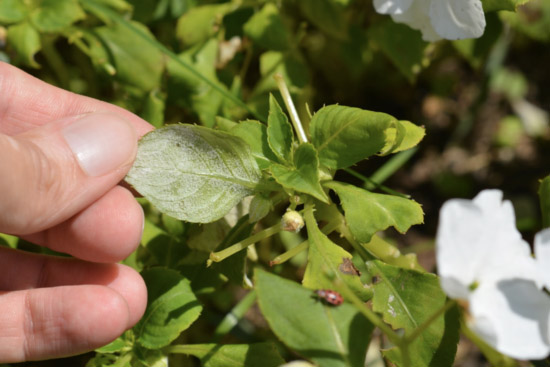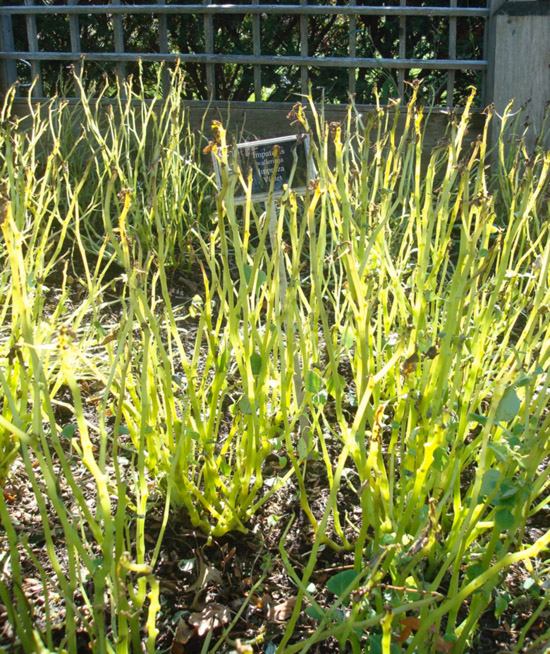Issue 14, September 8, 2014
Impatiens Downy Mildew
Impatiens Downy Mildew (IDM) was covered in Issue 3 of this year's newsletter. At that point of the growing season, the plant clinic had not received any reports of the disease. The article's intent was to provide some suggestions to help avoid problems with IDM during the 2014 season. Unfortunately, IDM development is influenced by many factors. Even with the use of preventative practices, the disease was predicted to be problematic during the 2014 growing season. Cool and wet conditions throughout the summer have provided a near ideal environment for disease development. The plant clinic has recently received reports of the disease from various locations throughout the state. I have also observed the disease in numerous flower beds throughout the Champaign-Urbana area.
IDM is a caused by the fungal-like pathogen, Plasmopara obducens. The disease only infects garden impatiens (Impatiens walleriana), while New Guinea Impatiens (Impatiens hawkerii) and related hybrids exhibit high resistance. IDM is an aggressive disease and has the ability to overwinter in the soils of previously infected planting beds. As a result, infections can occur even when growers provide clean, disease-free plants.
Early symptoms of IDM are subtle. Infected plants display slight chlorosis or mottling of the leaves. Affected leaves often appear wilted with edges that curl downward (first photo). The most distinct disease identification feature is a white, downy growth on the undersides of the leaves (second photo). Infected leaves eventually drop from the plant. Stems initially remain upright, but eventually collapse (third photo).

Impatiens walleriana with yellowing and curling leaves caused by Impatiens Downy Mildew.

White downy-like growth on the underside of a leaf infected with Impatiens Downy Mildew.

Planting of Impatiens walleriana defoliated by Impatiens Downy Mildew.
It is important that you remove and destroy infected plants as soon as possible. Bag the infected material, including any fallen leaves or blossoms. Any nearby impatiens should also be removed from the site, as they may be infected as well. Composting the diseased material is not recommended. The pathogen produces structures capable of overwintering in the Midwest. Composting may not completely destroy the pathogen. Avoid replanting a previously infected location with susceptible impatiens. The IDM pathogen is suspected to produce spores capable of surviving in the soil for many years. If you have struggled with this disease in years past, your only option is to consider planting other shade tolerant species. Since the introduction of this disease, alternatives to Impatiens walleriana have been promoted for use in the landscape. Most retail greenhouses and garden centers provided suggestions for suitable alternatives. Michigan State also published a fact sheet titled, Alternatives to Impatiens.
Fungicides can provide some protection when applied preventatively on an appropriate schedule with a rotation of active ingredients. However, homeowners have fewer fungicide options when compared to commercial applicators and may not be able to protect impatiens for the entire season. Therefore, we do not recommend that homeowners rely on fungicides for control of IDM. (Travis Cleveland)
Author:
Travis Cleveland